Driving with snow chains on your tires is a great idea when the roads are covered in snow and ice. But will snow chains make your car slower? How fast can you drive with snow chains?
With snow chains on your tire, you should drive your car not more than 20 to 30 miles per hour (30 to 50 kilometers per hour). Even if you want to, your car will not be able to drive at its normal top speed on a snowy road with chains on the tire.
You should not try to drive faster than about 20-30mph with snow chains. If you go over a dry patch of the road, the chains can cause your car to slide out of control when steering or braking.
It is important that the snow chains are fitted properly on your tires. If not, your tires will develop minor cosmetic damage, especially if you speed up the car. Be safe and keep your speed below 30 mph when driving in snowy weather.
Read on to learn more about how fast you can drive with snow chains on and tips for driving safely with snow chains.
Snow chains can be used up to 20-30mph (30-50km/hour). It would be difficult to drive faster than this in snowy conditions with snow chains, even if you want to. The traction on the snowy road prevents your car from going too fast.
Snow on the road and tire chains on your tires is not a normal driving condition. This situation negatively affects the fuel efficiency of your car, as well as its speed.
For your safety, you are required by your state authorities to use snow chains on your tires when driving on roads and streets under heavy snow. During such conditions, the fastest that you can go is no more than 20 to 30mph. Any faster than 20 to 30 mph with chains can cause your car to slide out of control when braking or steering.
There are car models that give specific details on how fast they could go on roads heavy with snow. But 20 to 30 mph. should be the average speed limit you should observe regardless of your car’s type and make.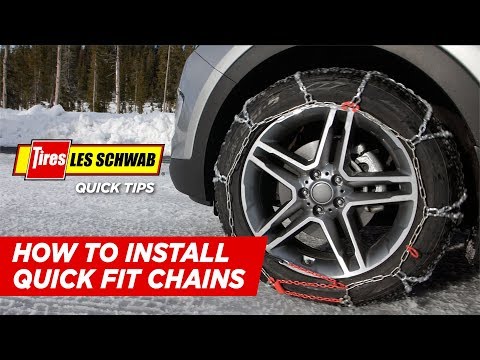
The main reason why you are using snow chains is that the road condition is bad. The snow that is continuously falling makes it difficult for the road crew to keep up. The condition is already forcing you to drive slowly.
If you’re confident that you have properly installed the tire chains and that they won’t fall off, then you could drive normally. But ‘normally’ means normal speeds in snowy weather, not in sunshine conditions.
If you drive faster than 30 mph on snowy roads, you risk damage to the chains, tires, and your car. When the weather is so poor, making chains necessary for driving, you can’t drive faster than 35 mph.
Below are some of the things that will limit your speed, even if your tires have chains in snowy roads and streets:
If the snow on the road is already compacted, you can drive at a fairly fast speed but not too fast. But if there’s a fresh layer of snow on the road, you have to drive more slowly.
If there’s a tight fit in the snow chain and the tire, there will be more grip on the road, and you can drive faster. But if it’s a loose fit, you have to drive slower. Be sure to use the right chains for the size of the tires.
The newer the tire chain, the more confident you will be in using it, and the faster your car can go. The reverse will be true if you are using an old tire chain.
If this is your first time using a snow chain, you will tend to go slow. After using it several times, you will be more confident, and thus, be able to drive faster.
To some extent, the tire chain’s design can affect your speed while driving in the snow. Some snow chains cover the entire tire tread and tire walls, while some only cover part of the tire tread.
Snow chains can get you out of difficult situations in snowy weather, but not if you drive too fast.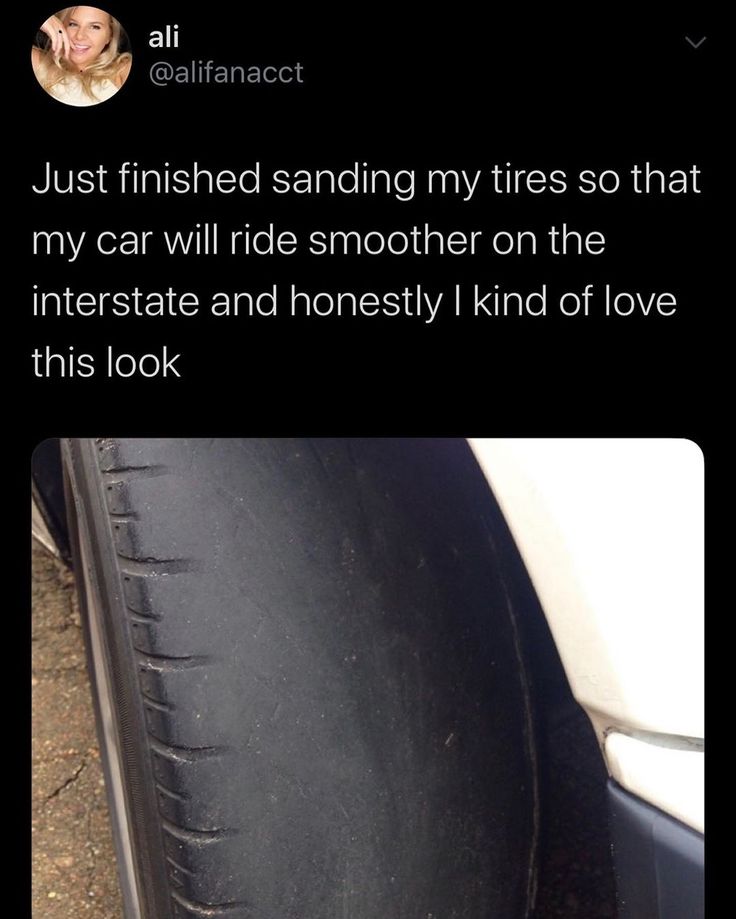 The main reason why tire chains are used is to give you a safe way to travel an unsafe road. Dangerous road conditions mean extra care in driving your car.
The main reason why tire chains are used is to give you a safe way to travel an unsafe road. Dangerous road conditions mean extra care in driving your car.
Here are some safety tips when you’re driving with snow chains:
Before installing the tire chain, see to it that the tires are properly inflated. There should be at least three millimeters of tread in it. Better yet, use winter tires if you have them.
See that your brake locks are working and not frozen. If they are frozen, spray some WD-40 until they thaw. Bring along a shovel just in case you bog down on the snow.
You will destroy the tire chain, your tires, and the road your car is running on. That means after you have gone through an icy road and ahead is a road cleared of ice and snow, you don’t have to drive with chains.
You can use just one pair of tire chains, but it is better to use two pairs for better traction and grip.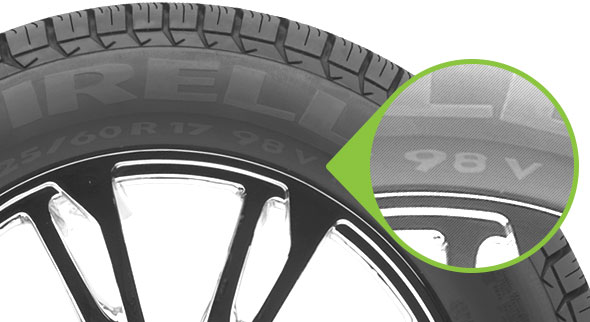 If only one pair is used, the snow chains are installed on the driven wheels.
If only one pair is used, the snow chains are installed on the driven wheels.
Using only one pair will either cause your car to understeer or oversteer. If you have four-wheel drive, you need to cover all your tires with snow chains.
So if you have a front-wheel car, install the chains on the front wheels. Your car will oversteer if you put the chains only on the front wheels.
If yours is a rear-wheel drive, but the chains around the rear wheels. Your car will understeer if you put the chains only on the rear wheels.
If your tires are already covered with snow chains, turn off the car’s Traction Control/Anti-skid safety feature. To be sure, check your car operator’s manual.
After installing the chains, don’t drive right away. Start the engine and gently shift from neutral to gear 1 (or Drive, if automatic) and drive slowly. After a short distance, stop and check the fit of the chains.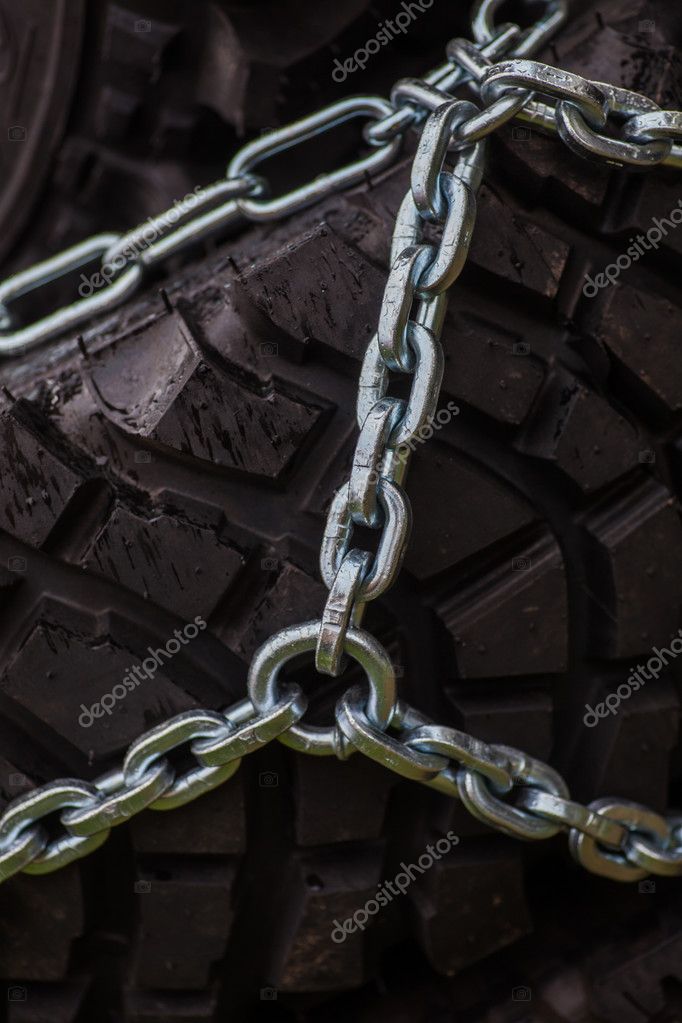
Adjust them if necessary so that they are securely fitted on the tires. They shouldn’t slip from the tires while your car is running.
Keep your speed down and minimize sudden jerks on the steering wheel. Be particularly careful when negotiating bends and curves. Don’t step on the gas and the brakes abruptly. Drive as gently as the outside conditions allow.
After using the chains, check if there are parts that are damaged during your trip. Look for links or connectors that are broken. Repair them if possible. If not, replace them with a new one.
Clean and dry the snow chains before putting them in storage. Chains made of metal can corrode. It is important to get them dried completely before they are stored.
Again, how fast can you drive with chains? Your car can go as fast as 20 to 30 miles per hour (30 to 50 kilometers per hour) when it is equipped with snow chains. You won’t be able to drive much faster on snow and ice.
You won’t be able to drive much faster on snow and ice.
Don’t expect that you can normally drive; rather, expect that your speed will be reduced. Don’t try to drive faster than about 30mph, as this can cause your car to slide out of control.
If you drive too fast while your tires are wearing snow chains, you will cause minor damages to them. You can minimize the damage to the tires if you limit your speed below 30 mph.
And if you drive your car too fast and one of the tire chain snaps, it will damage your car’s body or chassis. The chain may even get entangled with the shock absorber and other parts of the car under the chassis.
Yes, it could, so be prepared when you are driving on snow. It is frightening to have your car skidding. When this happens, try to remain calm and decide where you want the car to go.
Here are some steps you can do when this happens:
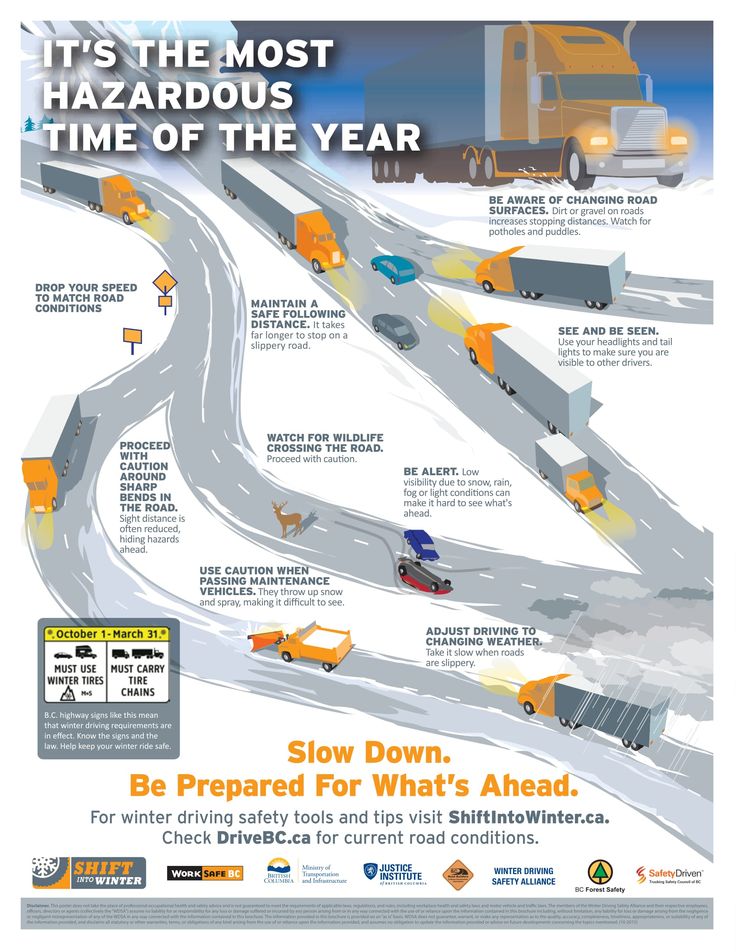 Don’t Slam on Breaks
Don’t Slam on BreaksDon’t slam on the breaks but steer the car gently in that direction. This can happen when you are running at 35 mph or more.
Slow down to keep your car from hydroplaning. Take your time before driving straightaway after a snowfall or rainfall. The road is slippery so wait until everything has settled before driving away.
Hold the steering wheel tightly with both your hands. The road is influencing how your car is turning, but you can control it by keeping a solid grip on the steering wheel.
It is when you are approaching or negotiating a bend that skids often happen. So be slow when you are nearing a corner.
Turn off your car’s cruise control when traveling on snow. Cruise control under snowy conditions can lead to skidding or hydroplaning. You can’t shift the car’s weight when it is in cruise control, and it can easily lose traction.
The snow chains must be fitted securely on the tires. If not, they can fall off when you are driving fast. It would help if you practiced how to install the snow chains on your tires. It is relatively easy to do. In installing the chains, use a pair of gloves and a pair of tire tensioners.
If not, they can fall off when you are driving fast. It would help if you practiced how to install the snow chains on your tires. It is relatively easy to do. In installing the chains, use a pair of gloves and a pair of tire tensioners.
Here are the steps you can follow to do this:
Get the chains from the pack or box and make sure that the chains are straightened out and not looping over one another. Hold them up so that one end is in your right hand and the other end is in your left hand.
You should see the metal latches along the two sections of the chains. The latches and hooks of the chains are usually color-coded to help you connect the same colors together.
You should connect them in such a way that they will not cause any damage to your tires. To be sure, follow the instructions on the chain pack or box.
Lay the chains on the ground in front of the tire. The latches should be on each side of the tire.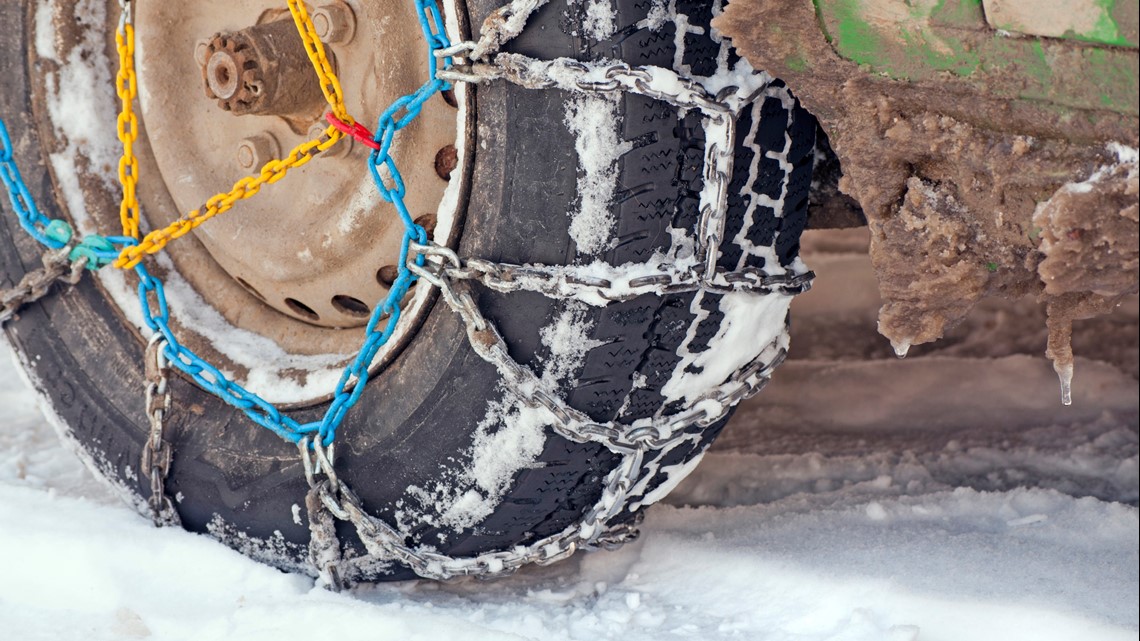 The tires should not run over them.
The tires should not run over them.
Start the car and drive it forward so that the chain is directly under the tire. Stop the engine and cover the tire with the tire chain. Connect the latches on either side of the chain.
If you need to turn the wheel toward the inside of the car, you can easily access the chain’s connecting points inside the wheel.
If you install the chain on the right tire, turn the steering wheel on the left and vice versa if you install the chain on the left tire. Put the car on the parking brake so that it won’t move forward or backward.
Connect the hooked edges of the chain in the inner part of the tire. Then connect the hooked edges on the outside section of the tire.
Rotate the tightening cam or closing link so that the chains will be tight enough. This will ensure it won’t slip from the tire when the car is running. Make sure that the links of the chain are evenly distributed throughout the tire.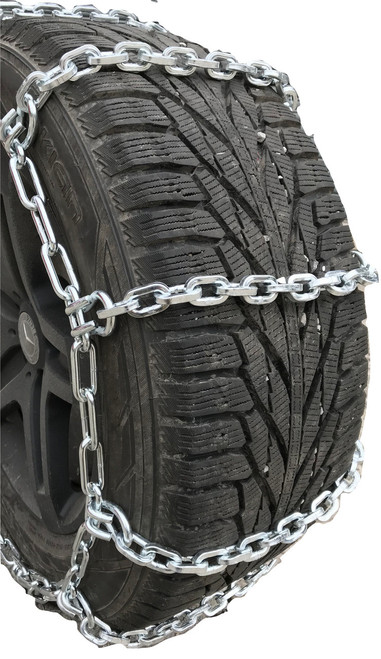
It would help if you only covered your tires with chains when traversing a road-heavy laden with snow. Using it unnecessarily will damage your tires and your car, and the road you are traveling on. Using a snow chain that is not suited to your tire’s size will also damage your tires.
Your car should go about 20 to 30 mph (30 to 50 kilometers per hour) with snow chains on the tires.
Don’t make the mistake of thinking that you can normally drive with snow chains on your tires. When your tires are wearing snow chains, you will notice that your car will not be able to reach its top speed.
If you drive over a dry spot of the road with snow chains, your car can slide out of control when braking or steering.
Be safe and keep your speed below 30 mph. when driving in snowy weather.
Related reading:
How to Drive in Snow Safely [9 Tips]
How to Put on Snow Chains? [Easy Snow Chain Install]
How to Put Chains on Tires
Snow Tires Vs Chains – Which One Should You Choose?
Differences Between Snow and All-Season Tires
Nothing can handle knee-deep snow and ice better than snow chains.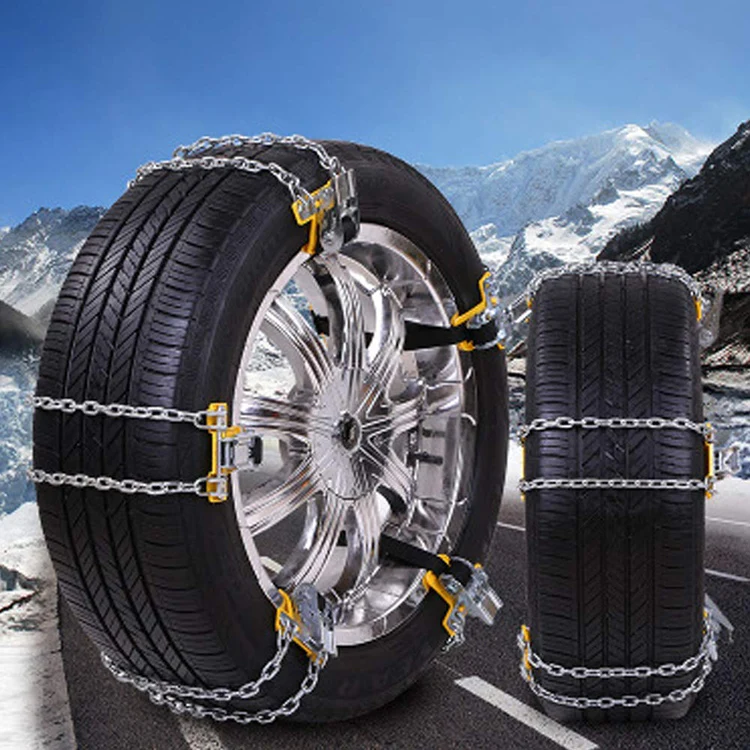 Even an offroad 4WD SUV could struggle with snow without snow chains. If you own a car and need to move through snow, you have no other choice but to use snow chains. Obviously, snow chains slow you down, but to what extent. How fast can you drive with snow chains?
Even an offroad 4WD SUV could struggle with snow without snow chains. If you own a car and need to move through snow, you have no other choice but to use snow chains. Obviously, snow chains slow you down, but to what extent. How fast can you drive with snow chains?
Snowchains are a series of chains that are wrapped around the tire to handle snow or ice with ease. Even with snow chains, driving through snow and ice could be grueling. But they do provide that extra grip that is required to drive through harsh weather.
The chains are wrapped around the tire with the help of several hooks, that provide a tight fit. As it is securely attached to the tire, the chains act as an extension of the grooves in the tire.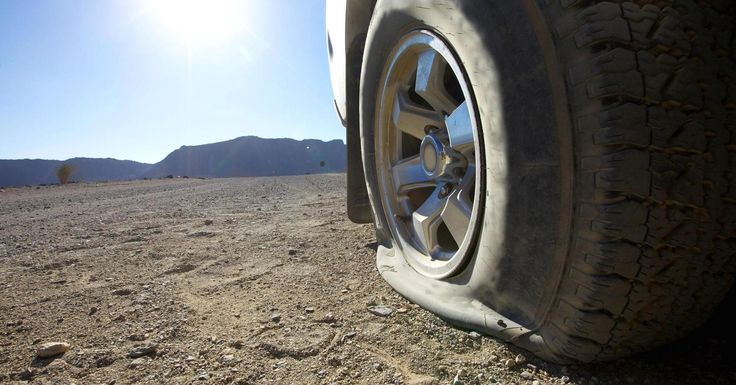
Snow chains reduce the area of contact between the tire and the road. This allows it to create more friction between them. This also means that you should only use them when it is absolutely necessary. If there is no ice or only a thin layer of snow, snow chains could do more harm than good. It could damage the vehicle as well as the road.
When you use snow chains, you cannot drive at the speeds you are used to. You should plan while considering the excess time that’ll take due to snow chains. On average you’d be able to cruise around at 20 mph. At the most, you will be able to travel up to 30 mph. Anything more than this would be a risk.
We already discussed that you shouldn’t use snow chains unless necessary because of the damage that you’ll incur. Other than these driving with snow chains will also affect the fuel economy of the car.
So keep in mind, by using snow chains you are running the risk of damaging your car, you won’t be able to drive at high speeds, and it will reduce your fuel economy.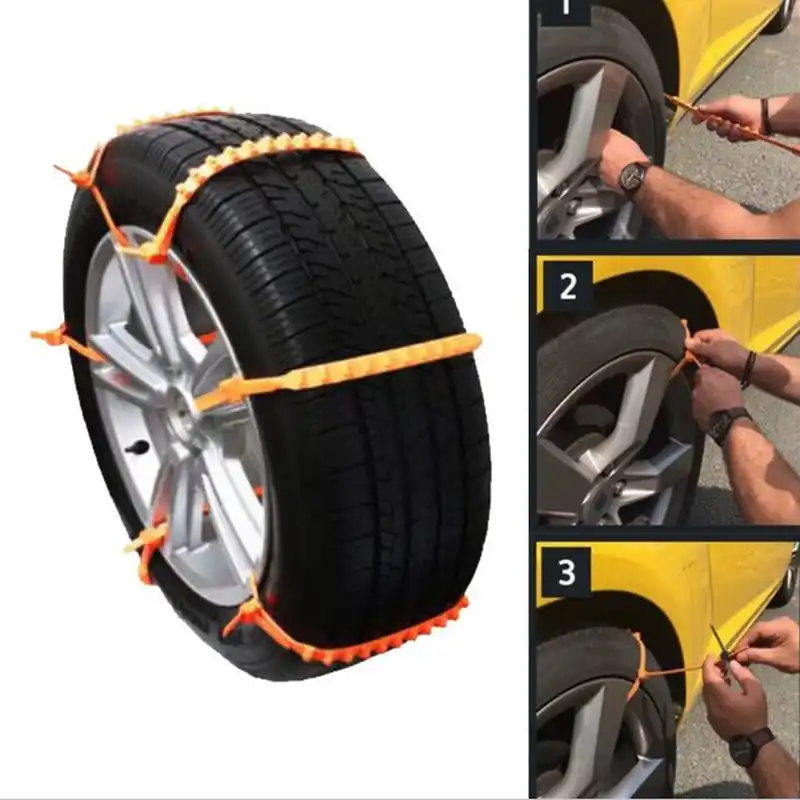 So you should only use snow chains when it is absolutely necessary.
So you should only use snow chains when it is absolutely necessary.
Some states that are frequently subjected to heavy snow, have laws regarding the use of snow chains. They make it mandatory to use snow chains in situations when they face heavy snowfalls. Just like the rule to use snow chains, they also have a speed limit. That speed limit is often 30 mph.
When you look at the top speed you can get with snow chains on, you have to also look at the factors that affect the speed. 30 mph is the highest you can go. The weather might already be bad, but if it’s worse you might have to slow down from that 30 mph cap.
Here are a few factors that will decide how fast you can drive with snow chains.
You should never drive fast when the visibility is low. This is especially true when you are wearing snow chains and there is a layer of snow and ice on the road. If you are experiencing heavy snowfall, chances are you do not have great visibility at the moment. In cases like this, you should try to drive as slow as possible.
The Status Of The Snow ChainYou should keep in mind that even though you have a snow chain you are not invincible. You can easily lose control in the snow. You should be more aware of this if your chain is old. If it has been sitting for a while, there is a chance that it could be rusted.
If it is used heavily in the past, it would definitely have some wear and tear. The point is, with time the structural integrity of the chain is going to drop. While driving you should keep this in mind.
No matter how new your chain is, if it doesn’t fit your tire like a glove, you should take that into consideration while driving. Driving fast puts extra pressure on the chain. If it is not secured to the wheel it could come loose.
Driving fast puts extra pressure on the chain. If it is not secured to the wheel it could come loose.
Therefore depending on the age of the chain and how it is fastened to the car, you should slow down accordingly.
How Experienced Are You Driving In The Snow?If you are new to the entire snow chain topic, you should drive slowly until you get a hang of it. As you gain experience and confidence, you can slowly build up your speed.
Weather ConditionsWe already talked about how the weather could affect visibility. It also affects the condition of the road. Ice has less friction than snow.
So if you are driving through a patch of ice, you should slow down. A fresh coat of snow also has less than ideal friction, even if you are using snow chains. Ultimately, you need to assess the road conditions before you stomp on the accelerator.
There is a lot of factors that could determine how fast you drive with snow chains. Even though the law allows you to go up to 30 mph, if you are facing adversities you should slow down. The optimal speed no matter the conditions would be 20 to 25 mph.
Even though the law allows you to go up to 30 mph, if you are facing adversities you should slow down. The optimal speed no matter the conditions would be 20 to 25 mph.
Before you decide how to secure the chains to your tire, you need to decide which tire to fit them to. Do you go for the rear wheels or the front wheels?
Which tire you install the snow chains on depends on the type of car you drive. If it is a rear-wheel-drive car, you should install them on your rear wheels. If it is a front-wheel-drive car, you should install them on the front wheels. What about 4WD cars. For 4WD cars, you need snow chains for all four wheels.
Fastening the chains to the tire is not that complicated. But you should purchase a tire chain that fits your tire. Anything smaller or larger than your tire size is not going to fit.
The best way to do this is to lay them on the road or driveway untangled and stretched out.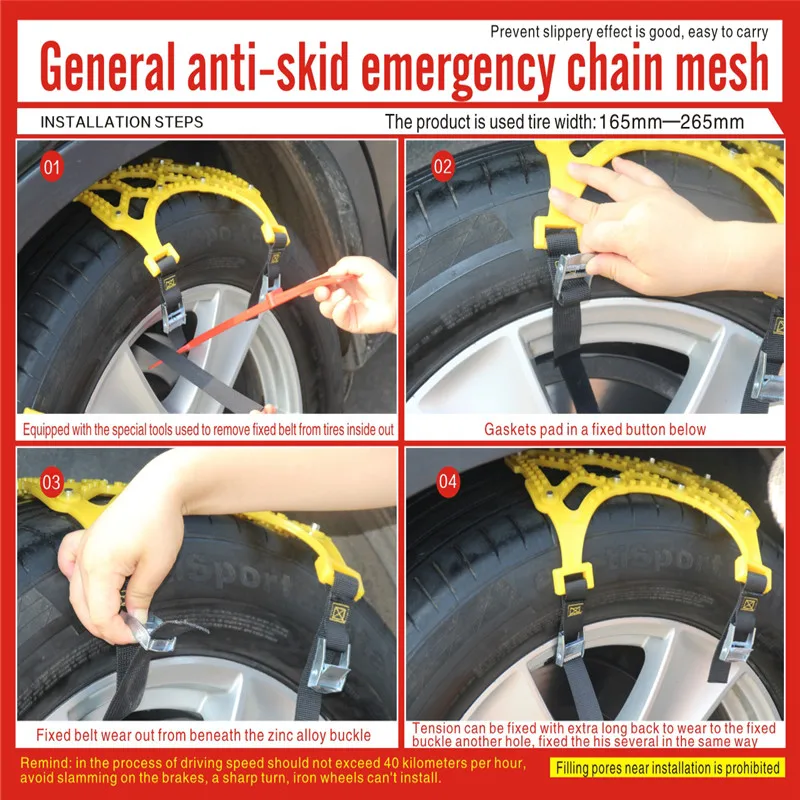 Place your wheels above the chains as close to the center as possible. Now all you have to do is wrap the chains around the tire.
Place your wheels above the chains as close to the center as possible. Now all you have to do is wrap the chains around the tire.
Now use the hooks or rings that come with it to attach each end. You should be able to cover the upper half of the tire with ease. Now move your car slightly forward, and finish up the rest of the hooks.
Pretty easy right? The process of installing the chains is easy as long as you are prepared. If you do it in your driveway or on a clear street it should be fine. But if you drive without the snow chains and decide to install them when you get stuck, then the situation could get messy.
Know the road conditions and be prepared before you start your journey.
If you don’t like to use snow chains, and there are plenty of good reasons to hate them, there are alternatives.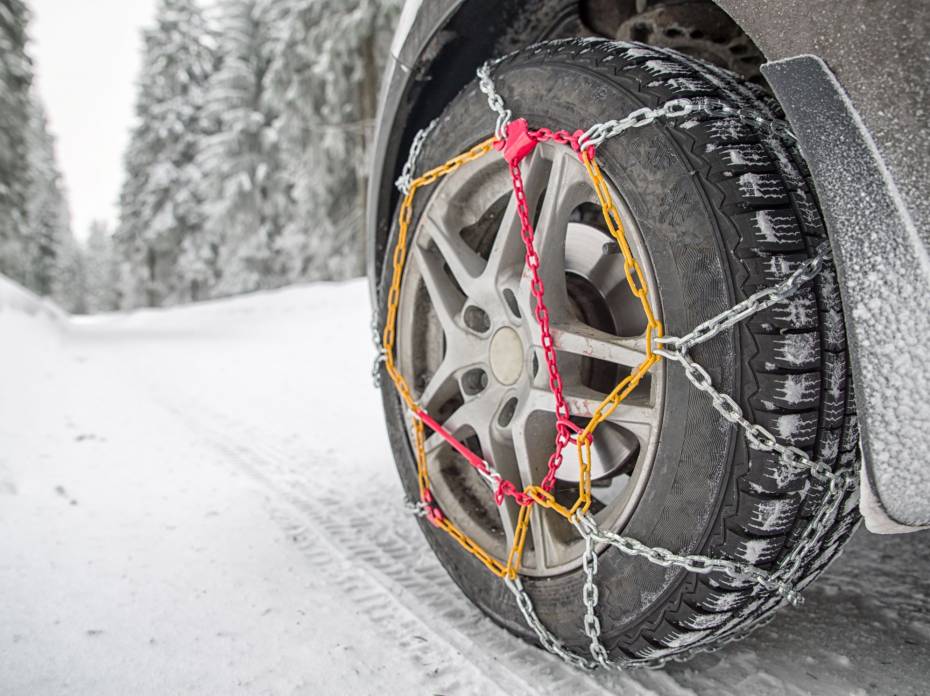 Here are some options.
Here are some options.
These are pretty much the same as snow socks. They wrap around the tire. Instead of being made of metal, these are made of chains. They are made out of fabric. The fabric is modified to give the best possible grip while driving.
It has a number of advantages over regular snow chains. They whey less than snow chains and it takes less room to store. Since they are light, they offer better control than snow chains. They are easy to set up. One of the main advantages is that it does no damage to the tire or the road.
But it is not all good news. They are prone to tearing if the conditions get tough. If you are worried about the speed limit of snow chains, snow socks are even worse. The maximum speed of snow socks is around 25 mph. According to some laws, they cannot replace the mandatory snow chains.
Spider spikes are a more modern alternative to snow chains. They are made of metal, and they are easily attached to the side of the wheels.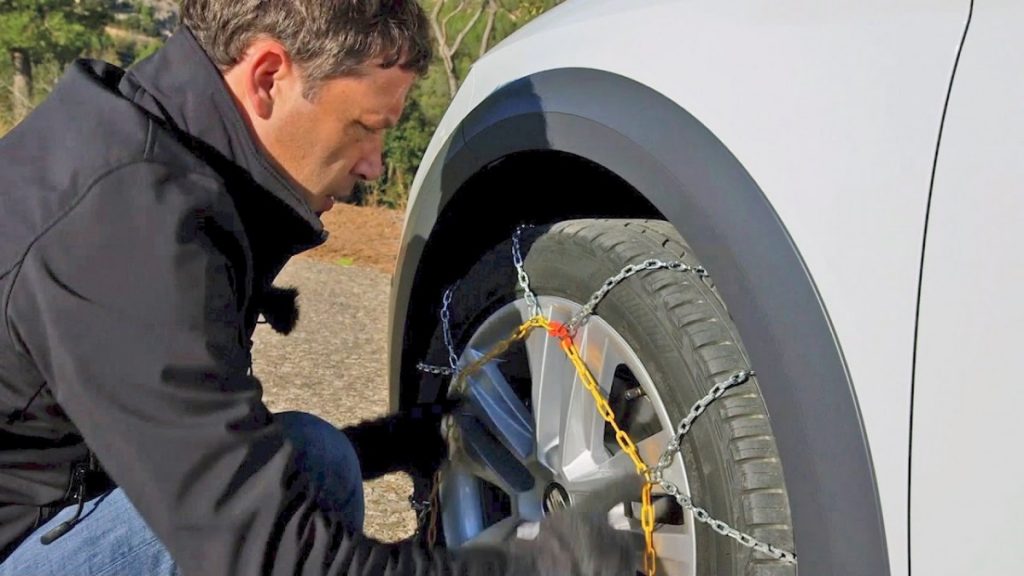 They are easy to move and quick to set up.
They are easy to move and quick to set up.
The main disadvantage is the price. These cost $350 and upwards. Looking at the speed, these don’t provide an advantage compared to snow chains.
Tire straps are often referred to as plastic snow chains. They are made out of plastic and they are attached to the wheel using straps. Installing these is much easier than snow chains, and it does little to no damage to the wheels.
These are a pretty good alternative for snow spikes. The grip they offer is slightly less, but you can get similar speeds. They tend to be slightly more expensive, other than that they are a perfect replacement.
Tire wraps are similar to snow socks, but instead of fabric, they have a fishnet design. The process of attaching these to the tires is also similar to attaching snow socks. Even though they look ineffective, surprisingly they can handle snow conditions well.
The process of attaching these to the tires is also similar to attaching snow socks. Even though they look ineffective, surprisingly they can handle snow conditions well.
One of the biggest issues with this is the wear. If you drive through a dry patch, it could easily be damaged. As long as you drive it through snow and ice, they are a decent alternative.
When it comes to snow tires, there are 2 types. One is studded tires and the other is non-studded. The studded tires work best but it has their own problems.
Both types offer great traction. The studded tires are often better though. You can even drive through dry patches without any issues. But the studded tires are known to damage roads when driving through dry patches.
Therefore they are illegal in a few states. They are costly, and if you don’t use them regularly, it doesn’t make sense to invest in them. Another issue is changing the tires. Fixing snow tires to your car is not the same as fixing regular tires. So it requires professional help to install them.
So it requires professional help to install them.
One of the main advantages you get by using snow tires is excellent traction. They can handle the most treacherous roads covered with snow and ice. Due to these capabilities, they are faster than snow chains or any other alternative. You can go up to 40 mph with snow tires.
Taking all these into consideration, all these alternatives are useful. But the conditions will eventually decide which is best. Snow tires would be a great investment if the area you live in is constantly bombarded with heavy snow. If not they are not worth the price tag.
If it is the speed and traction that you are looking for, snow chains are by far one of the best solutions. They are a bit tedious to install but the time spent is worth it.
If you do not want to spend a lot of time setting up your defense against snow, the other alternatives should be okay to use.
Winter is coming. The streets are going to be dressed with snow and ice.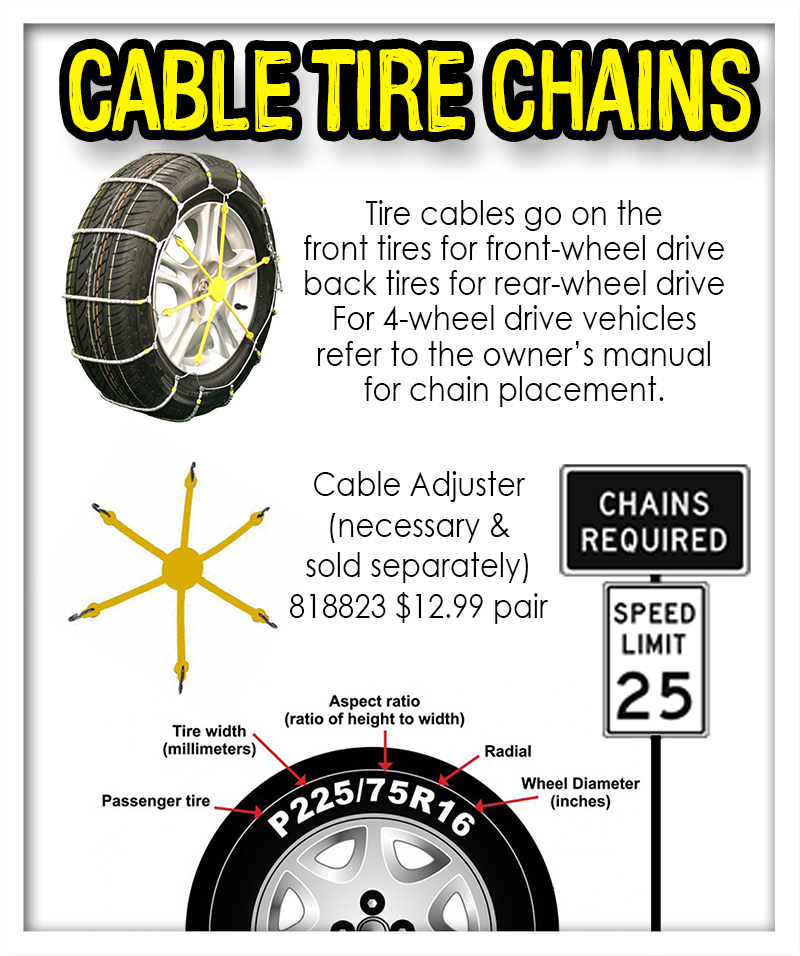 For an experienced driver, it is going to be just another day. If you are new to driving in these conditions, snow chains aren’t going to be enough to protect you.
For an experienced driver, it is going to be just another day. If you are new to driving in these conditions, snow chains aren’t going to be enough to protect you.
They might give some added protection, but to safely navigate frictionless streets, you need to follow some other practices as well. Here are some tips to safely navigate through snow and ice.
This is probably the most important practice to safely drive in these conditions. You might think 30 mph with snow chains is already slow enough, but you should try to keep it at around 20 mph or less if you are inexperienced.
Unlike sunny days even if you slam the brakes it will take a while to come to a stop. If you are going fast even by a fractional amount, the stopping distance increases drastically.
If you feel like you are swaying a lot, or seem to be drifting while taking a turn, that is an indicator that you are driving too fast. Easing off the gas pedal is the safest way to drive through adverse weather.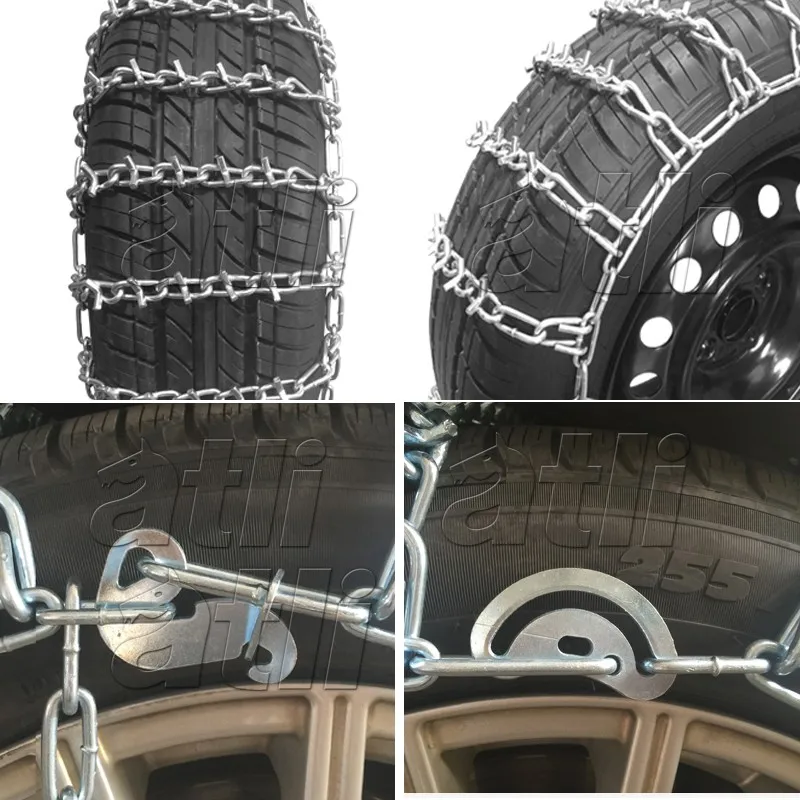 Even if you are an experienced driver, try to keep it under 30 mph when you are using snow chains.
Even if you are an experienced driver, try to keep it under 30 mph when you are using snow chains.
This is one of the common rookie mistakes that you can make. Never slam your brakes even if you are tempted to do so. It will cause the car to slide and you will lose control. This doesn’t mean you shouldn’t use your brakes when necessary. Ease into it and decrease the velocity of the vehicle slowly.
You already know the braking distance increases exceptionally in ice and snow. And you cannot use the brake as you do on dry roads. If you are too close to the tailgate of the vehicle in front, you will crash into them if they slow down.
Never overtake the car unless they are driving really slowly. If you are trying to overtake a car driving above 15 mph, you are taking a huge risk.
No matter how cautious you are, things could go sideways in an instant.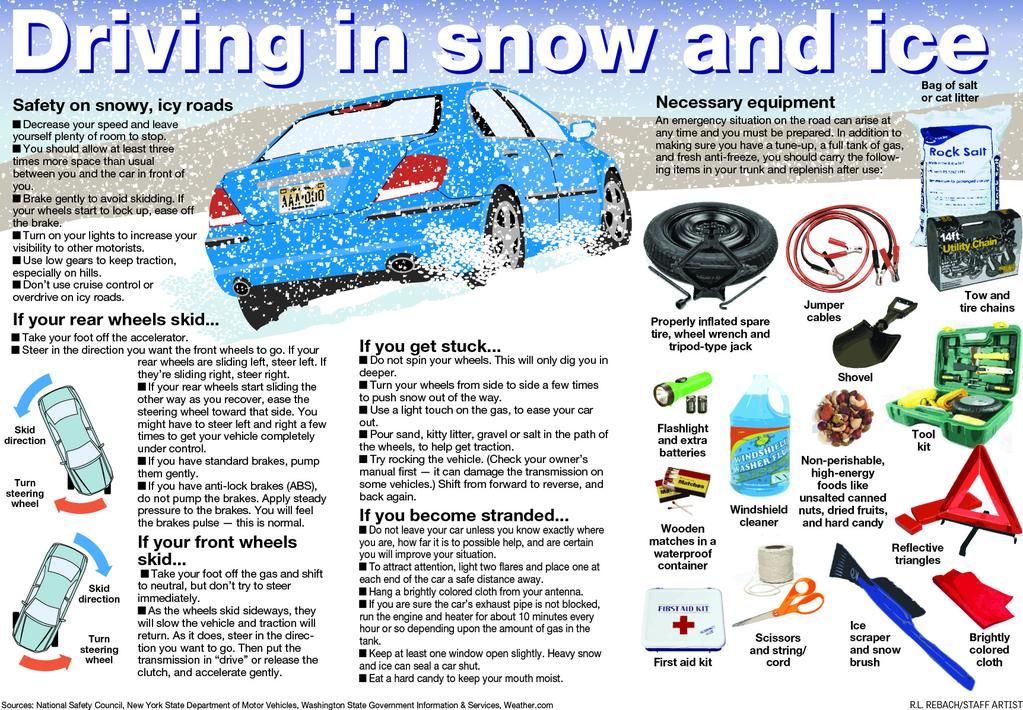 In these conditions, the car will literally turn sideways and you’ll be in a slide. Reasons for being in a slide are either driving too fast or slamming the brakes.
In these conditions, the car will literally turn sideways and you’ll be in a slide. Reasons for being in a slide are either driving too fast or slamming the brakes.
You might be a safe driver but know how to deal with a slide. The basic technique is to turn the wheels in the direction you want to go. There is a lot more behind this, make sure to look it up.
After we drive for a while, we adjust to that style of driving. Sometimes your subconscious might take over. Snowy conditions are completely different from sunny highways. You constantly remind yourself of the conditions you are in and never let your subconscious take over. Be aware of your surroundings and slow down if necessary.
Driving through snow and ice is never going to be 100% safe. By following these tips and using a snow chain or any other alternative you can vastly reduce the risk.
Here are some of the most common questions regarding snow chains.
There is a wide variety of snow chains in the market. The most basic economical snow chains cost around $30. If you want a high-end snow chain with additional features you could end up paying $300 or more. The price tag depends a lot on the size of the tire. Larger truck tires could cost a hefty sum.
There is only one way to drive using snow chains, that is slowly. Try to keep the car under 25 mph. As long as you properly fasten the snow chains to your tire, driving around with them will not prove to be a major challenge.
Yes, there is a possibility of snow chains damaging the tires if you are not careful. As long as you use it as it is intended, that is through ice and snow you should be fine. If you constantly drive through dry patches it could damage your tires and the road. Improper installation could also damage your tires.
As long as you use it as it is intended, that is through ice and snow you should be fine. If you constantly drive through dry patches it could damage your tires and the road. Improper installation could also damage your tires.
It depends, if you are planning to drive through ice and snow, you definitely need to use snow chains. But if not you should never use snow chains. Sometimes you are bound by the law to wear snow chains. It depends on the season, weather conditions, and the road you are going to drive through.
You should not drive faster than 30 mph when you are on snow chains. If you over the speed you could lose control, or bust your tire. The speed limits are there for a reason, it is to ensure your safety and everyone else on the road.
Other than the dangers of overspeeding, in most states, you will be breaking the law. So you will be fined if you Overspeed with snow chains.
There are plenty of different options if you don’t want to use snow chains. Each has its own pros and cons. The option that comes close to snow chains would be tire straps. Tire socks and tire wraps are also decent options.
Snow chains are a piece of essential equipment to navigate through snow. But using them provides a new set of challenges. It poses a measly speed limit of 30 mph. This speed limit might be frustrating, but that is the maximum speed you can drive during such conditions.
Even though there are a few other alternatives to snow chains, most of them are not going to increase your maximum speed.
Attaching snow chains to the wheels is not easy. You should be prepared if you do not want to get stuck in the snow. Attaching the chains to the wheels in the open exposes you to the harsh weather. So when needed, make sure to attach them before driving into the sunset.
Driving through snow and ice is definitely risky. By using equipment like the snow chain or another alternative, you can reduce the risk. The best method to ensure maximum safety is to take it slow on the gas pedal.
By using equipment like the snow chain or another alternative, you can reduce the risk. The best method to ensure maximum safety is to take it slow on the gas pedal.
Find more related articles here:
Can You Drive With Snow Tires Above 50 Degrees?
Are Honda Civics Good In Snow? Recommended For Winter Driving?
Are Mustangs Good In The Snow?
Chains are an alternative to studded tires, providing a more stable and reliable ride in harsh winters. However, you need to know when you can wear them and how to move with them. Here we have prepared some tips for people planning to buy snow chains.
Studded winter tires date from the post-war years. Manufacturers then outdid themselves with solutions that would make driving easier in difficult conditions. Tires Nokian with studs in 1961 belonged to one of the first models of this type. Although many years have passed, manufacturers are still working on the retractable studded tire project.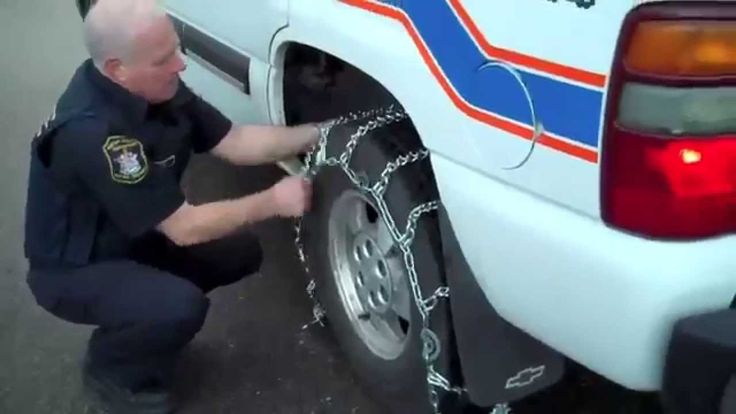 A winter tire is ideal for rallying, but in everyday use it is destructive to the pavement. Therefore, it is not surprising that studded tires have become banned in most countries. An alternative is chains for automobile wheels, the use of which is regulated by the Road Signs and Signals Ordinance. Snow chains in Russia can be used on snowy or icy surfaces after a warning sign with a snowflake symbol. In many European countries, including France or Italy, riding on chains is mandatory for citizens and tourists after sign C-18 (tires with chains tensioned). When planning a trip in the winter, it is worth equipping yourself with car chains so that you can put them on at the right time and thus avoid problems. An exception from the Old Continent is the Netherlands, where chains cannot be used. Put chains on wheels.
A winter tire is ideal for rallying, but in everyday use it is destructive to the pavement. Therefore, it is not surprising that studded tires have become banned in most countries. An alternative is chains for automobile wheels, the use of which is regulated by the Road Signs and Signals Ordinance. Snow chains in Russia can be used on snowy or icy surfaces after a warning sign with a snowflake symbol. In many European countries, including France or Italy, riding on chains is mandatory for citizens and tourists after sign C-18 (tires with chains tensioned). When planning a trip in the winter, it is worth equipping yourself with car chains so that you can put them on at the right time and thus avoid problems. An exception from the Old Continent is the Netherlands, where chains cannot be used. Put chains on wheels.
Snow chains for wheels are also snow chains that are commonly used on the road when road and weather conditions become very difficult.
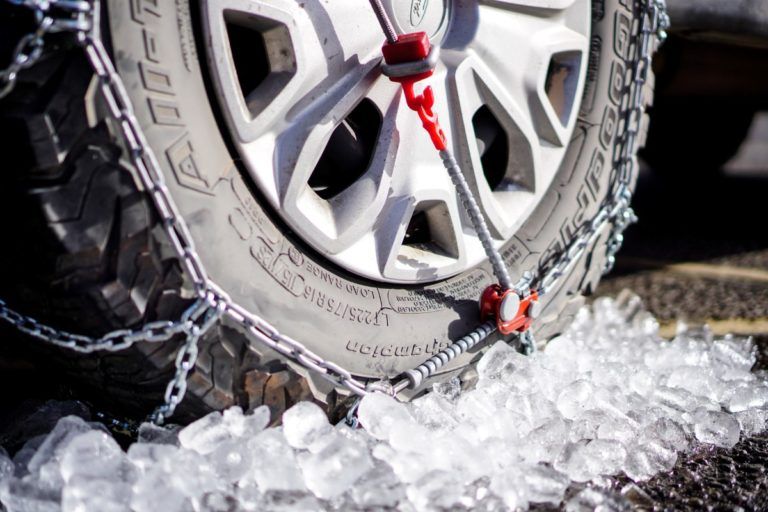 It is worth installing a warning triangle 50 meters from the car and buying clothes with reflective elements. This is important because, for example, during a snowstorm, visibility on the road is limited.
It is worth installing a warning triangle 50 meters from the car and buying clothes with reflective elements. This is important because, for example, during a snowstorm, visibility on the road is limited.
Before purchasing chains, check your vehicle's owner's manual to see if the manufacturer allows them to be used, and if so, what parameters they should have. It depends mainly on the amount of space between the tire and the wheel arch of the car. A bad choice can cause damage to the car, so you must also take into account the dimensions of the currently installed tires and rim. Also make sure the model protects the wheels from scratches - especially aluminum. Manufacturers offer many different models. Snow chains for wheels can be easily selected according to our needs and expected frequency of use. One of the main differences between the models is the assembly method. We can choose chains with a manual tensioner, which should be tightened after passing the first meters. The second option is an automatic tensioner, which automatically tensions the chain onto the bar while driving. You can also easily find chains mounted on the outside of the wheel.
It depends mainly on the amount of space between the tire and the wheel arch of the car. A bad choice can cause damage to the car, so you must also take into account the dimensions of the currently installed tires and rim. Also make sure the model protects the wheels from scratches - especially aluminum. Manufacturers offer many different models. Snow chains for wheels can be easily selected according to our needs and expected frequency of use. One of the main differences between the models is the assembly method. We can choose chains with a manual tensioner, which should be tightened after passing the first meters. The second option is an automatic tensioner, which automatically tensions the chain onto the bar while driving. You can also easily find chains mounted on the outside of the wheel.
It is rather difficult to travel by car in off-road conditions. On the way, the vehicle can meet not only mud and viscous soil, but also a large amount of snow masses and a slippery surface. In winter, it’s difficult to cope with driving on such a road and not get stuck.
In winter, it’s difficult to cope with driving on such a road and not get stuck.
However, you don't have to drive a tractor to get to your destination. You can also do this in a car. But for this it is recommended to install anti-slip chains on its wheels. With the help of these accessories, it is really possible to get out of the most seemingly hopeless situations. After all, sometimes even rubber with spikes can not provide normal grip.
Regardless of the structure of the road surface, the anti-skid chains will create a normal adhesion of the wheels to the road surface. While studded tires often cannot drive on ice or get out of a mud hole.
Anti-slip chains are available in various materials. In addition, they have different sizes and designs themselves. For example, for driving on slippery roads, it is best to choose chains with small links. But for moving through mud or snow, it is worth installing chains with large links.
 Devices made of these materials are designed for driving on loose snow masses. Such chains can slightly increase the size of the wheel, but they do not damage it when used. Their service life is short. The pluses include the fact that with them you can move at high speeds. The simplest chain, more like a zip tie
Devices made of these materials are designed for driving on loose snow masses. Such chains can slightly increase the size of the wheel, but they do not damage it when used. Their service life is short. The pluses include the fact that with them you can move at high speeds. The simplest chain, more like a zip tie When choosing anti-slip chains, it is necessary to take into account the width of the rubber tread and its size. All anti-slip chains have special lugs, with which they are well fixed on the surface.
In conclusion, it is worth noting that it is best to buy domestically produced anti-slip chains. As for foreign manufacturers, such products often have poor quality locks and plastic braids.
Ideally, manufacturers should prepare universal snow chains. However, you should agree on other ideas that can also improve your safety while driving in difficult winter conditions. One alternative is liquid snow chains. This is a mixture of polymers, which, after a light and quick application to the tire, increases grip on ice several times. Smooth, non-slip chains on wheels may not work well in snowdrifts. It turns out that not only a thick steel chain can support us in winter. Manufacturers also use composite. Another solution is snow chains, commonly known as snow socks. They are made from steel-reinforced material and are therefore thinner and slightly more versatile than traditional chains. However, they are less effective, especially on fresh snow.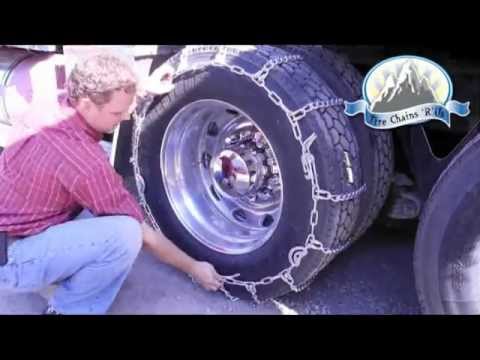
Have you ever used car or truck tire chains? Write in the comments where and under what conditions it was!
In view of the fact that winter or even studded tires are used almost everywhere in Russia in winter, snow chains are not widely used. Except, maybe, areas of complete impassability.
Contents
While in Europe, on the contrary, few people use studded tires. And when traveling to ski resorts, on some roads you may encounter a mandatory requirement to use snow chains.
You will be informed about this by the relevant road sign. And the fact that you can have winter tires installed will not matter. So for peace of mind, it's better to have chains in the trunk.
New vehicles are often offered for sale with different wheel/tire sizes. Some of them may not be suitable for fitting snow chains.
The problem is that installing chains adds a few centimeters to the width and diameter of the tires. This means that with some wheel/tire combinations, the snow chains will hit the body, suspension or parts of the braking system, which can lead to serious consequences.
Circuits can also interfere with the correct operation of the electronic sensors mounted on the steering wheel.
The vehicle manual must clearly state which wheel size the manufacturer allows snow chains to be used with.
If the chains cannot be used with the wheels installed on your machine, then your only option is to buy a second set of wheels/tyres.
You should only use snow chains where the road surface is completely covered by compacted snow or ice.
If signs require the use of snow chains, they must be fitted to all vehicles. Including those equipped with both winter and studded tires.
If you attempt to use the chains on a road that has been cleared of snow, you risk damaging the road surface and the vehicle.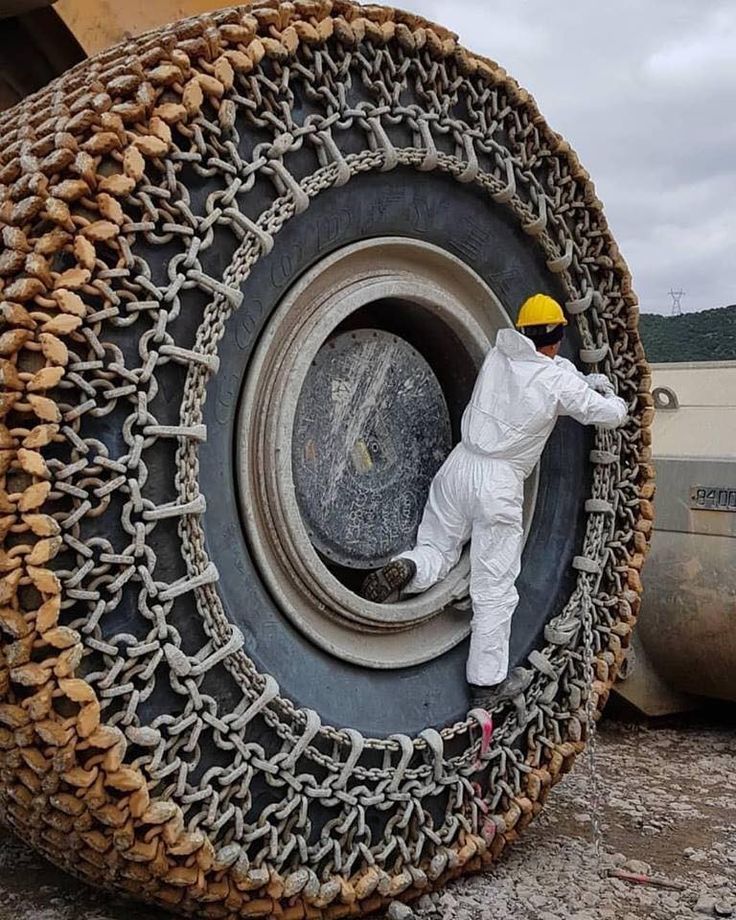 If you damage the road surface, you may face a large fine.
If you damage the road surface, you may face a large fine.
Therefore, as soon as you reach a section of the road free of snow or ice, you must select a level place and remove the chains.
It can be quite inconvenient to install or remove chains, for example when the wheel arches are filled with snow and your gloved hands are wet and cold.
So when you buy chains, don't just throw them in the trunk and forget about them. The practice of installing them at home when the weather is warm and dry, and you feel much more confident when you have all the necessary tools at hand, will help to cope with them in more difficult weather conditions.
At least one pair must be used on the drive wheels. But two pairs are better, especially if you spend a lot of time in conditions where snow chains are a must.
As a general guide:
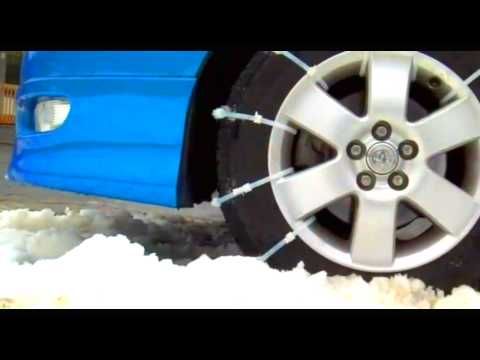
As a general rule, traction control (a system that controls the amount of slip on the vehicle's drive wheels to prevent them from spinning during acceleration) should be disabled when snow chains are used.
It is important to drive carefully with snow chains fitted. For cars with chains, different countries have their own speed limits. Reduce speed when cornering and avoid sudden acceleration and braking.
A few tips for using chains:
